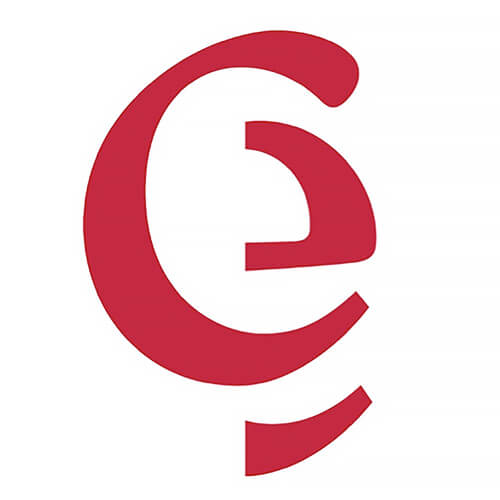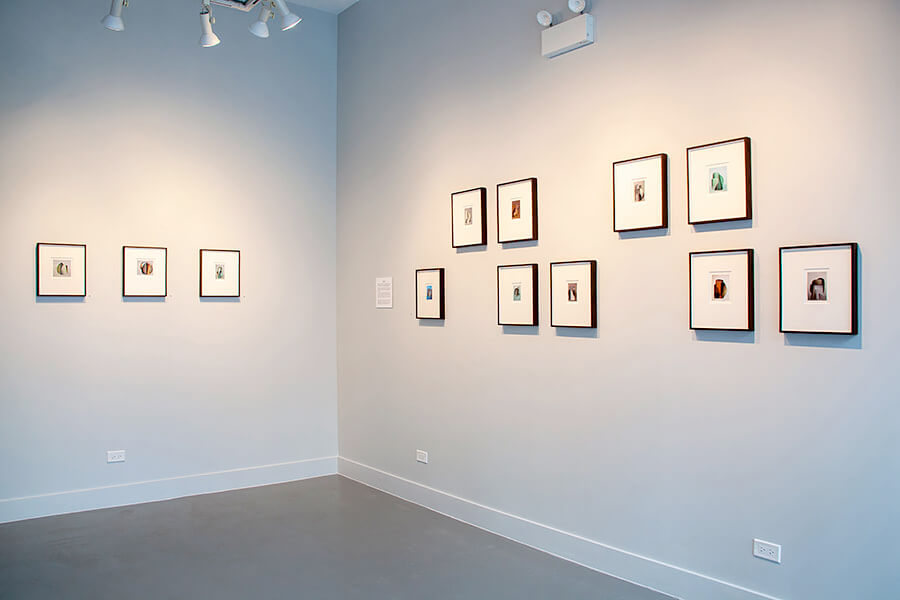Catherine Edelman Gallery is pleased to debut the work of international photographers
Nicolás Combarro,
Hannah Hughes and
Lilly Lulay, alongside well-known Chicagoan,
Aimée Beaubien, in New Formations. The show opens January 17 and runs through March 7, 2020.
It is widely understood that the sheer quantity of photographs in our digital culture are growing exponentially. In response, more and more artists are exploring unique ways of working with photographic images. New Formations features works by four artists who are reinventing how photography is used to represent a place, object or memory. Sourcing images from a variety of archives, these artists cut, collage, weave and paint to reconstruct photographic prints. As the works become more complex, memories are fragmented, places are deconstructed, and objects are recontextualized. Situated between photography and sculpture, the works in the exhibition go beyond the content of a singular image, introducing a new visual language.
Hannah Hughes Statement
Hannah Hughes is a London based artist, whose work intersects photography and sculpture, transforming shapes, gestures and textures from everyday photographic images to create a new dialogue. Her latest body of work Mirror Image is part of her ongoing collage series Flatland, which explores the overlooked corners and in-between spaces surrounding the photographed subject.
Flatland started in 2014, taking its title from Edwin A. Abbott's Victorian novella set in a two-dimensional realm, Flatland: A Romance of Many Dimensions. The collages reconfigure fragments of found printed material, sourced from auction catalogues, journals, books, advertising imagery and magazines, to create speculative new forms, situated somewhere between reproduced images and the physical world.
The original Flatland collages were assembled from an archive of hundreds of mass-produced printed images collected over several years. Each individual collage was spliced, masked and overlaid by hand, removing or concealing the original figurative subject, generating an alternative visual form. Shapes are continually repeated but never identical, resembling building blocks, creating an abstracted vocabulary of irregular geometries -- misshapen orbs, hemispheres, curved triangles, cylinders and wave-like columns -- that balance on the brink of collapse. Inverting positive and negative volumes, using reflection and diffraction, the Flatland collages record lost spaces in new forms.
Mirror Image involves further processes of construction and deconstruction, creating temporary sculptural forms in the studio using the found cut shapes from the archive and re-creating original photographic fragments that are then printed and re-assembled as collages. Using shapes as an alphabet or typology of forms, these new photographic images present flat photographic objects as malleable, subject to continual change. Navigating between two and three dimensions, Hughes's flat sculptural collages explore ideas of materiality, translation, repetition and difference.
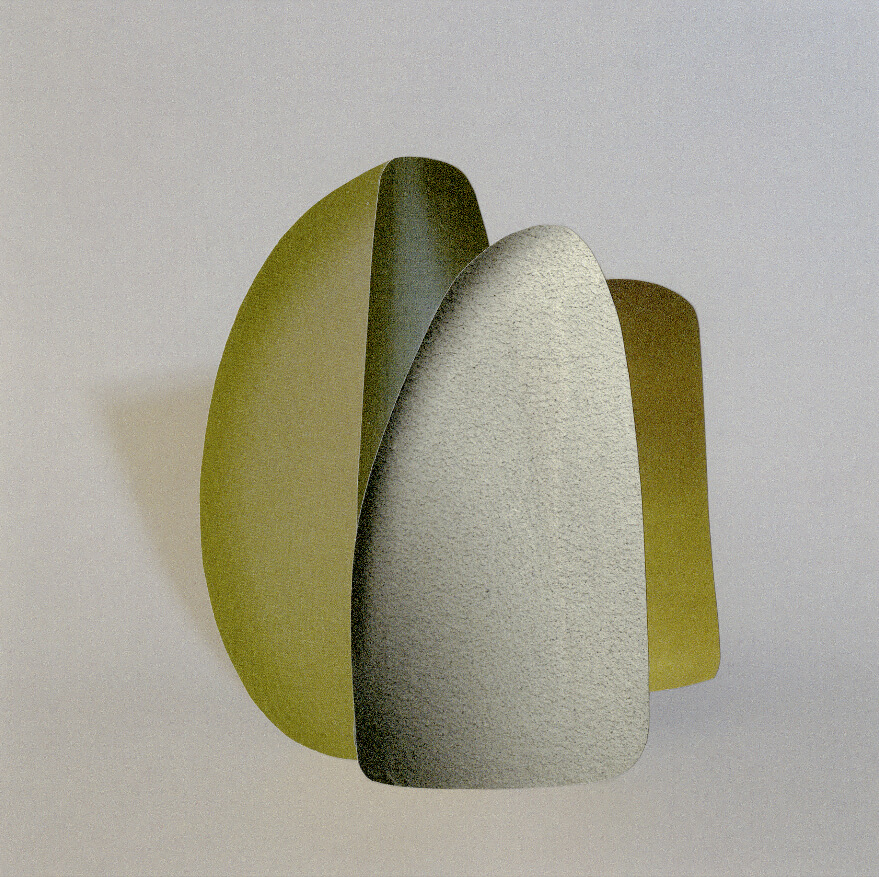
Mirror Image #21, 2019 From the Flatland series © Hannah Hugues
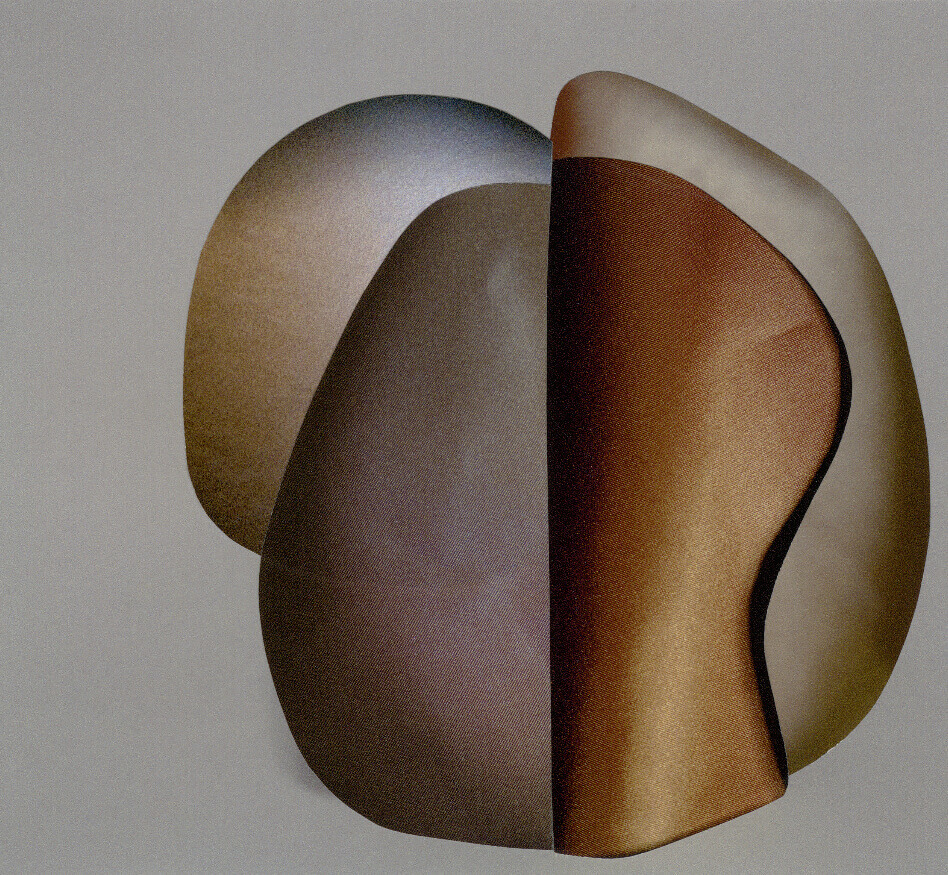
Mirror Image #23, 2019, From the Flatland series © Hannah Hugues
The imaginative expanse of the home, museum and garden holds me. In it, lines blur between public and private, institutional and domestic, labor and leisure, propagation and contemplation. Wild, fast growing vines slink through the yard and climb around our house. Inside my home studio, plants mingle with huge tangles of cut and woven photographs that dangle down from the ceiling. I photograph the ever-changing conditions in my studio as plants dry and projects grow.
With my camera, I move through different types of collections reflecting on our attachments to objects, focusing on the complex tethers between an artist's work and the things they collect. I spent one year photographing in the home museum known as the Roger Brown Study Collection, capturing my own impressions of the objects that surrounded this celebrated Chicago painter during his lifetime. Brown's multilayered assemblages drawn through his domestic spaces felt like collages, activated as my body drifted throughout his home. After learning that Roger Brown cultivated fifty different varieties of roses in one of his gardens, I began to think more deeply about how the idiosyncratic nature of our personal collections extends into the compositions of the gardens we construct.
Archeologists have been unearthing and restoring Emily Dickinson's garden in an effort to better understand her personal world and source of creativity. Dickinson kept collections of letters addressed to her close at hand, to record textual fragments running every which way along the flaps and folds of her envelope poems in flashes of impulse. The spliced open and folded, the domestic and the collected, the intersecting and multidirectional structure: these too are the substance of my photographic cut-ups that take form in artists' books, collages, sculptures and installations. My own notational flashes exist as photographs and from these I create ephemeral paper structures that accommodate, attach to, climb, trail, cling, spread, creep and rearrange within each new exhibition environment: loudly, brightly.
Throughout the seasons and over her lifetime, my great-grandmother attentively photographed what grew around her. Extending this fertile lineage, I photograph in my tiny Chicago garden and my mother's lush Florida garden. I translate my responses into an array of different representations of size and push color to its limits, cutting my printed notations apart to completely reorganize photographic material and experience. The effects of time on the color of my great-grandmother's snapshots – some screaming in degrees of hot pinks, others soaked in glowing oranges – hover in my imagination as I weave together my saturated prints.
My work draws from an environment of hyperstimulation, compulsion and interruption; comparing the disjointed experience of attention and distraction to the sharp recontextualization of collage. The origins of photocollage were born in vibrant albums fashioned by Victorian ladies: early examples of the new medium of photography intersecting with collage. Delicate articulations of social networks, leisure and class were expressed with sophisticated image manipulation. Parallels exist between this photo-historical lineage and montage strategies circulating throughout our internet culture. User-producers participate in the act of archiving through the deployment of personal narratives expressed photographically and posted to online platforms.
In my work, I document my own personal entanglements with domestic spaces, institutions, archives and narratives suggested by objects and histories. These webs of connections are rewoven into vibrant configurations, tethered within installations that become physical presences moving in and through exhibition spaces. Expanded ranges of time are illuminated in environments folding around and stretching into the peripheries of visual and architectural space. My works are bright yet fragile assertions of personal and art historical trajectories at the margins of the archive.
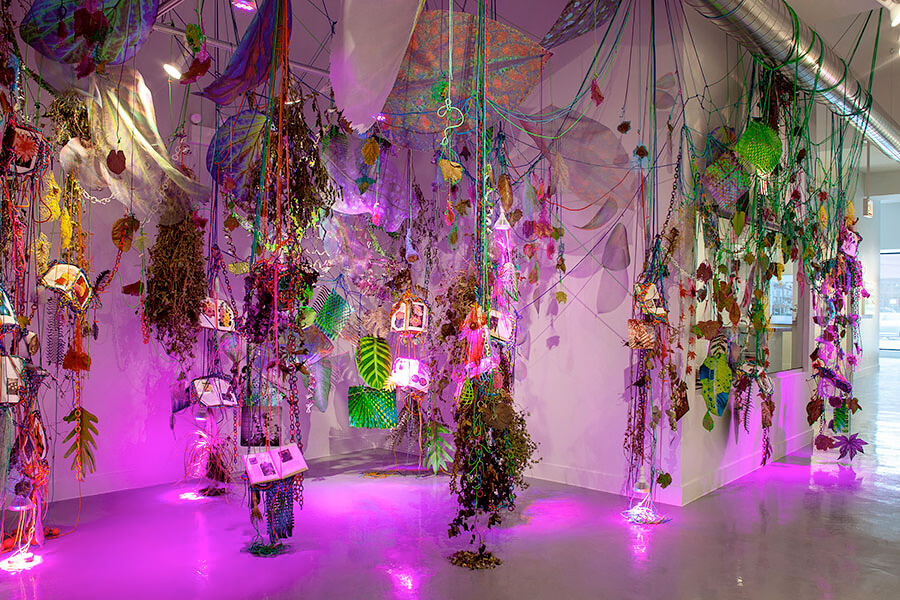
Hothouse Picture-Cyclopedia, 2019 © Aimée Beaubien
starts from a particular vision of informal, affordable contemporary architecture: constructions generated in a free, unregulated, spontaneous way. The observation, documentation, and study of these buildings has generated a diverse body of work: a collection of architectural forms determined by their own immediate context, captured by means of a documentary vision. It is an archive assembled around the concept of architecture and resistance, consisting of constructions in which a structural logic is combined with cultural heritage. It is architecture free to represent a form of resistance against aesthetic or socioeconomic determinants, or which simply resists, in spite of having been forgotten or even scorned.
The photographs in this series undergo a range of different transformations: pictorial interventions, collages, and drawings that seek to decontextualize and deconstruct the buildings in order to abstract their forms and transform their basic structures. As a whole, Spontaneous Architecture establishes an architectural laboratory, at times a cabinet of curiosities, in which structures and forms assume a central role. Rules disappear and the constructions take possession of their surroundings, freeing themselves from their context.
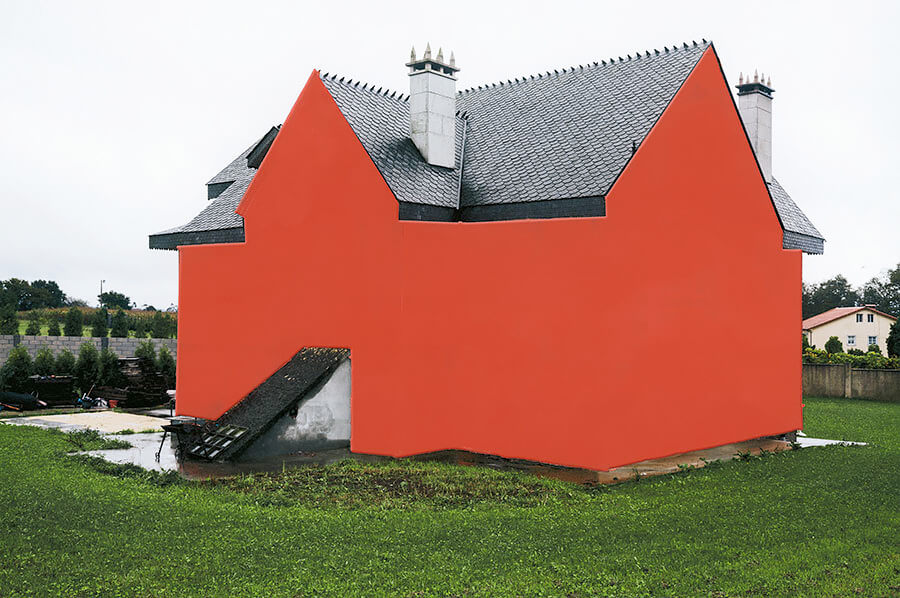
Untitled (Spontaneous Architecture. Painted X), 2017 © Nicolás Combarro
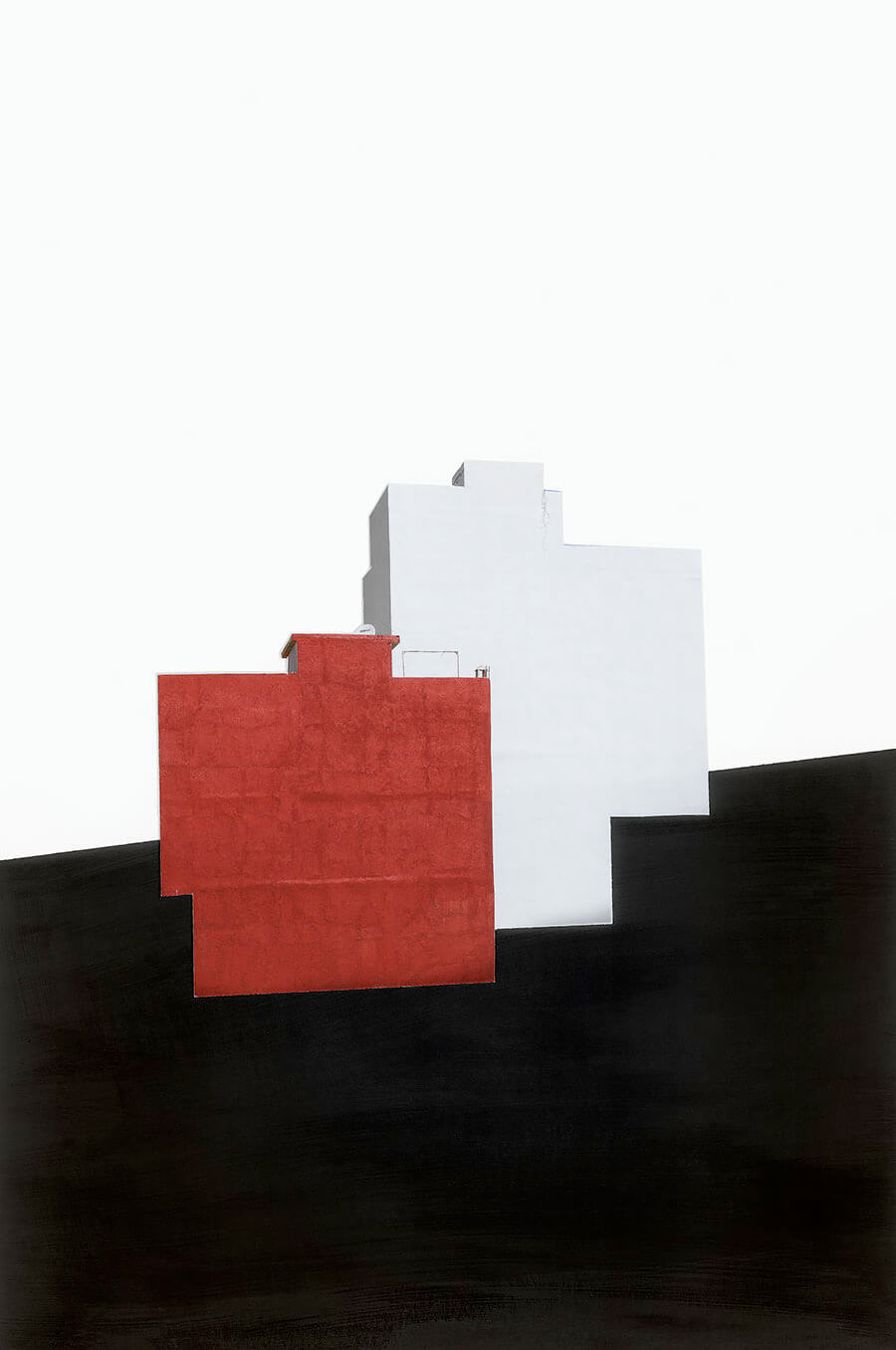
Untitled (Spontaneous Architecture. Color Collage II), 2017 © Nicolás Combarro
The tool with which we produce and consume the most images today is the smartphone. It is an interface, a junction between the private and the public sphere. The world comes to us through a small screen in our pockets − and through this digital frame, we show ourselves to the world. As we interact with our touchscreens, we never physically touch the objects, people, or places we see. In order to point to this discrepancy, my work combines objects with various material and technology that stimulates the senses of touch and motion. I source my material from the internet and offline worlds, creating fragmentary, semi-transparent, and double-sided images. My work invites the viewer to look beyond the rectangular surfaces of phone screens and photographic prints, to question (in)visibility and (in)transparency within the new economy and culture of smartphone photography.
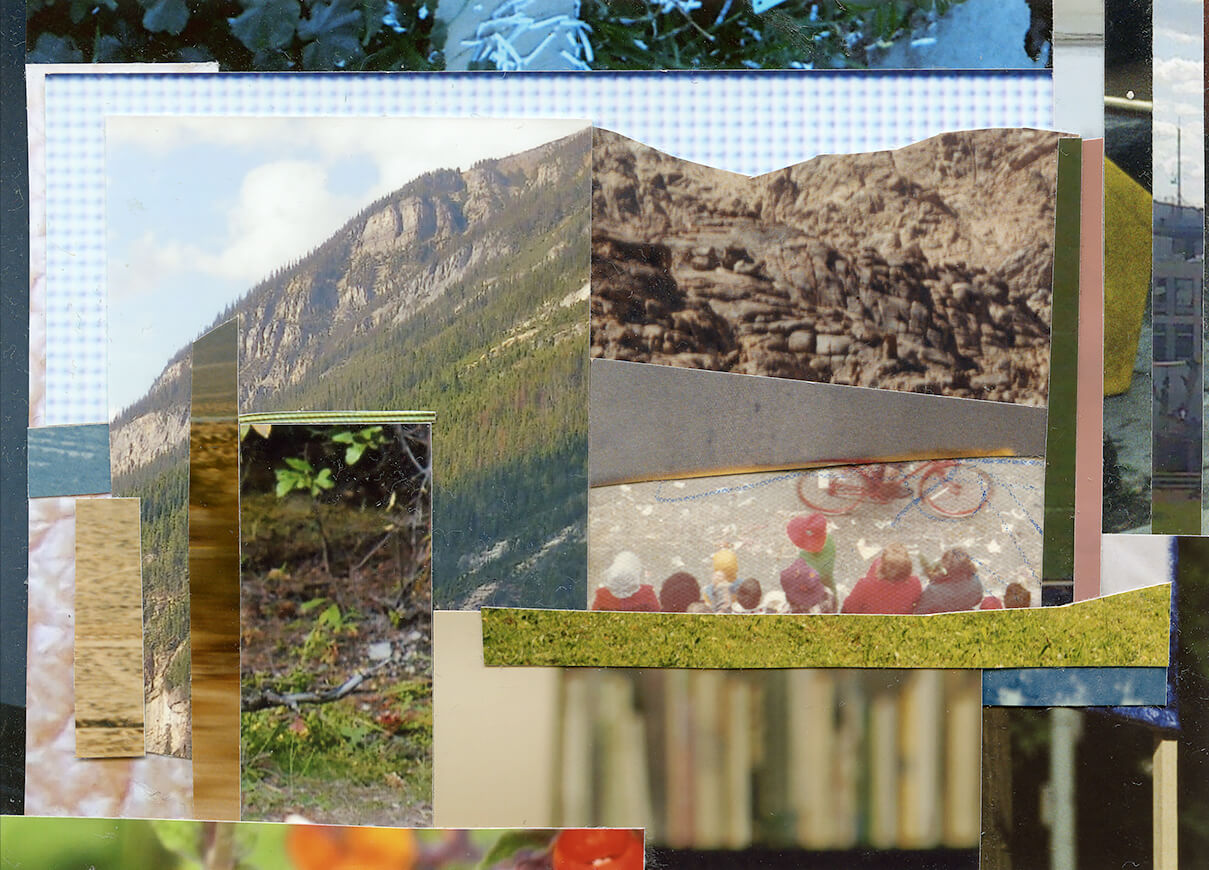
Mindscapes No. 74, 2014, From the Mindscapes series © Lilly Lulay
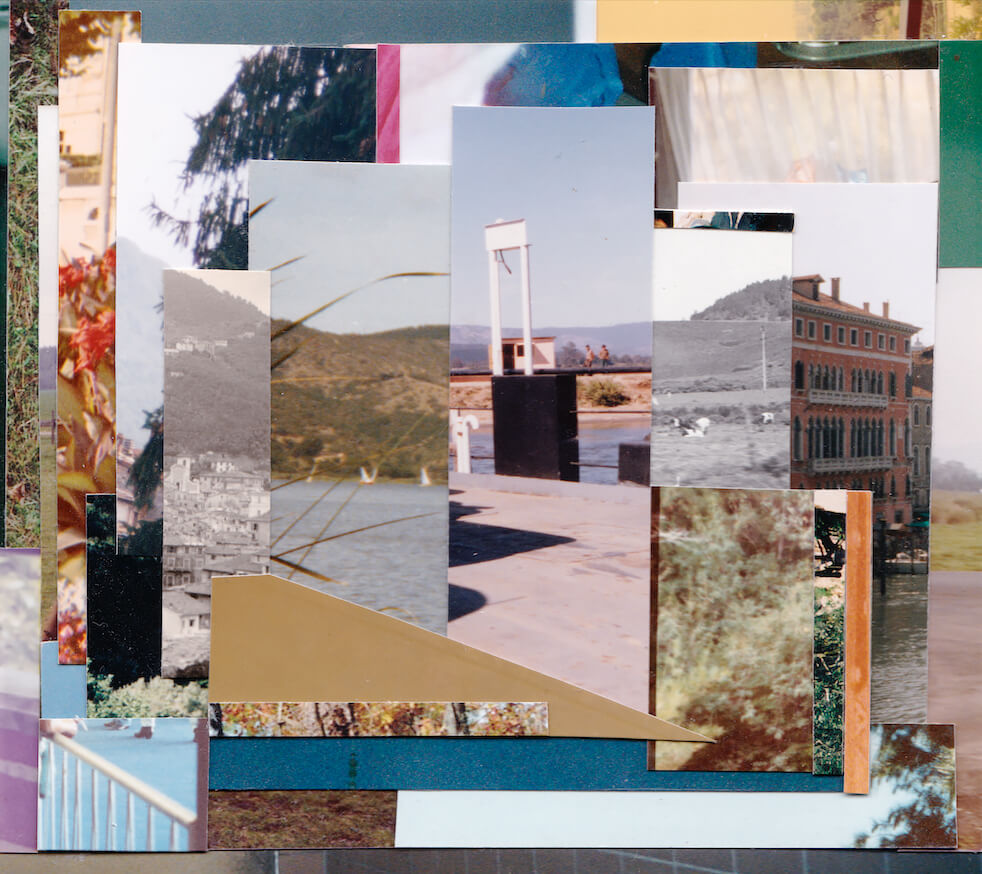
Mindscapes No. 102, 2017, From the Mindscapes series © Lilly Lulay
